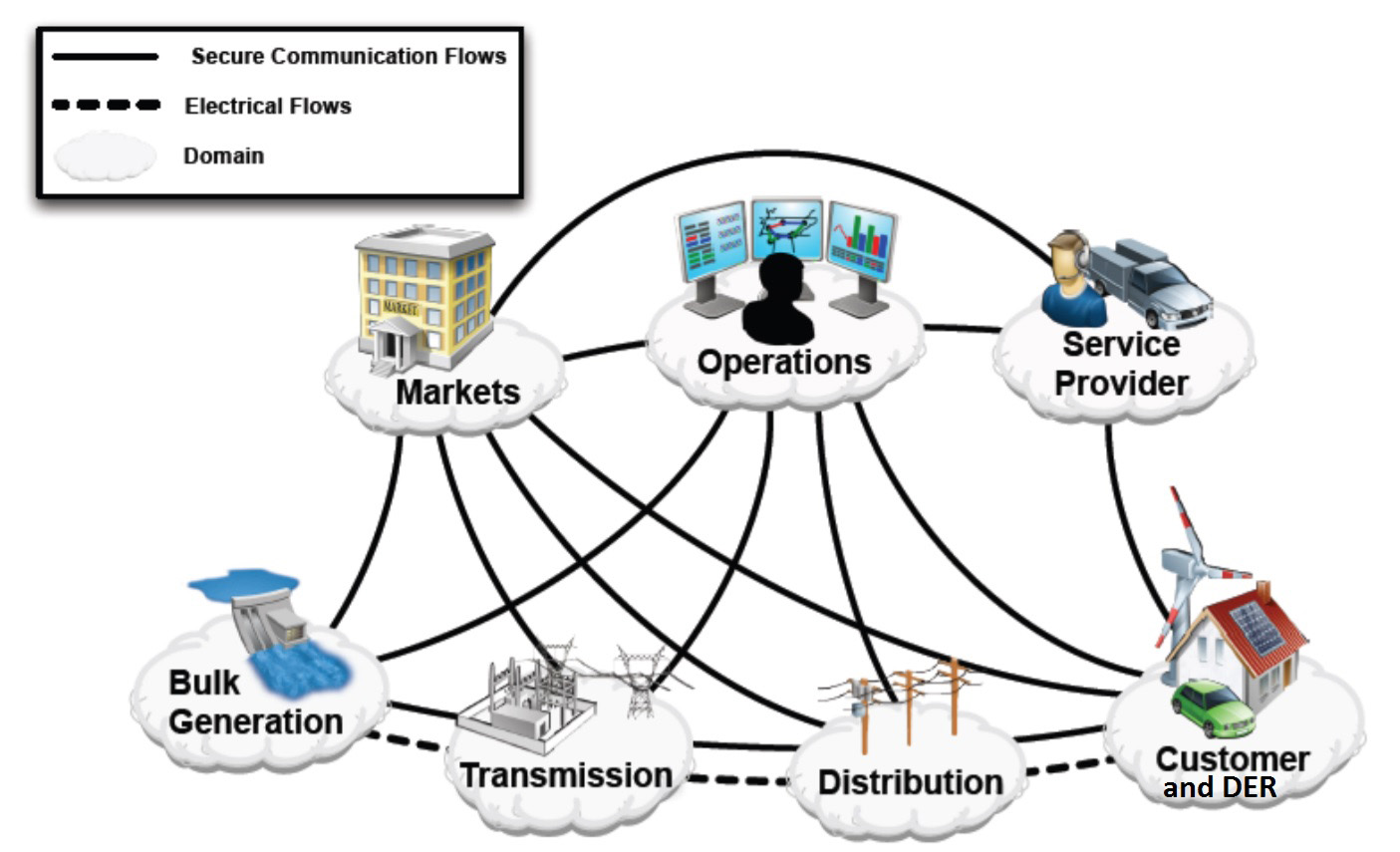Smart Grid, Smart Inverters for a Smart Energy Future
Dec. 14, 2017 by Benjamin Mow
Smart grid infrastructure can provide the technology necessary to reliably attain high levels of solar integration in the United States’ electric grid—so what, exactly, is a smart grid?
The electric power infrastructure in the United States—also known as the grid—is an engineering marvel, with more than 1 million megawatts of generating capacity and over 300,000 miles of transmission lines that provide power to residents in urban New York City and rural Wyoming alike. However, with electricity demand and variable renewable energy adoption increasing across the U.S., the current electric grid is being stretched to its capacity to provide reliable transmission and distribution of power. To help manage increasing penetration of variable renewable energy generation[1] while maintaining reliability, the grid could be updated to a “smart grid,” a modernization which would help automate and control the complex electricity needs of the 21st Century (Figure 1).

Figure 1: Schematic of the interphases between domains in a smart grid.
Source: Smart Grid Overview (NREL)
The smart grid is a power production and distribution system that allows for two-way flow of electricity and communication, ultimately designed to deliver sustainable, cost-effective, and secure electricity supplies. Much like the internet, the smart grid utilizes a range of advanced information, communication, and energy technologies working together to respond digitally to variable electricity demand across the grid. Benefits associated with the smart grid include:
- More efficient transmission and distribution of electricity
- Quicker restoration of electricity after power outages
- Increased and efficient integration of variable renewable energy systems
A smart grid technology that is already being deployed in conjunction with solar energy generation in some areas is the advanced inverter, or smart inverter. The basic function of a standard inverter is to convert the variable direct current (DC) output of a solar photovoltaic (PV) system to alternating current (AC) that can be fed into the electric grid or used onsite, a technology that effectively converts the electric output of solar panels into a usable form of electricity. Advanced inverters perform this same standard function, but additionally address some of the concerns and challenges associated with high variable renewable energy integration into the electric grid via sophisticated monitoring and communication of the grid status, the ability to receive offsite operation instructions, and the capability to make autonomous decisions to maintain grid stability and reliability. Advanced inverters can be used to support the grid in the case of high solar adoption in the following ways:
- Capability of “riding through” minor disturbances to frequency or voltage: Advanced inverters can direct a distributed generation system to stay online during relatively short, minor frequency or voltage disturbances.
- Capability to inject or absorb electricity into or from the grid: Variability in the power output from distributed generation can make it difficult for grid operators to keep frequency and voltage levels within the required range. The capability of advanced inverters to feed electricity into or take electricity from the grid can help maintain system stability by keeping voltage and frequency level within specified limits.
- Capability to provide a “soft start” after power outages: Staggering the timing of the reconnection of distributed generation to the grid after an outage can help avoid spikes in active power being fed into the grid, limiting the risk of triggering another grid disturbance.
To enable the use of advanced inverters in the market, decision-makers must ensure that regulations allow them to be used. Three considerations for decision-makers to keep in mind are:
- Requirements and compensation for grid stability services: Consider whether PV system owners are required to contribute to frequency/voltage control, what amount of time owners would provide these services, and whether they are compensated for this service to the grid.
- Standards that allow for advanced inverter functionality: Consider updating policies or codes and standards that allow new ranges for grid frequency and voltage requirements and staggered ramping of PV systems after outages.
- Alternative Ownership Structures: While the PV system owner generally also owns the inverter, alternative ownership structures (such as utility-owned inverters) could provide opportunities for improved coordination in advanced inverter integration.
California has helped pave the way for advanced inverter deployment, the first state to legislatively allow advanced inverters. The California Public Utilities Commission (CPUC) updated Rule 21 in June 2016, legislation which defines the state’s interconnection standards and permits the interconnection of smart inverters to the grid. Other states such as Hawaii and Arizona are following California’s lead, analyzing the cost and benefits of advanced inverter enabling legislation.
Expect conversations concerning advanced inverter deployment and the transition to a smart grid to continue as states begin to further understand smart technology’s benefits to renewable energy integration and overall electric grid infrastructure.
For information about solar technical assistance, visit www.nrel.gov/state-local-tribal/states.html or email stat@nrel.gov.
[1] Variable renewable energy (i.e., wind and solar power) can be a challenge to reliably integrate into the electric grid because it is inherently intermittent and non-dispatchable. For example, electricity production from photovoltaic systems decreases when a cloud passes in front of sun, requiring system operators to source electricity from a different generator during these times.
Share
